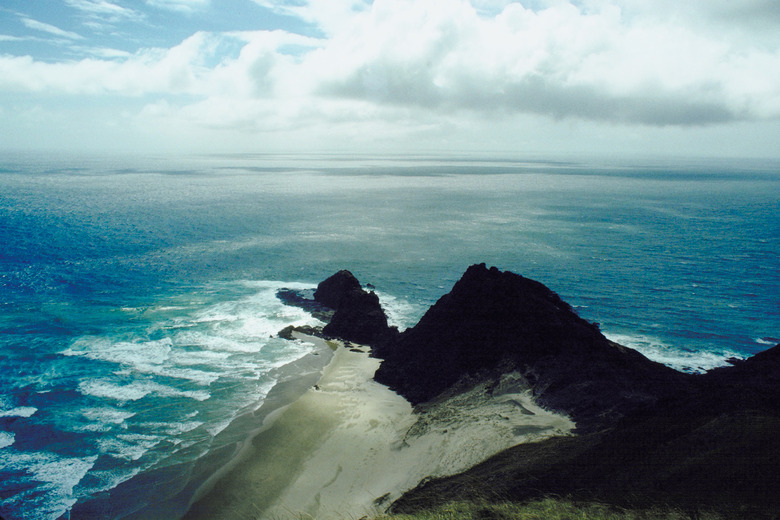Human Impact On New Zealand Ecosystem
Just slightly smaller in size than the U.S. state of Colorado, New Zealand's ecosystems face many environmental challenges because the country is both an economically developed nation and an island community. While many developed countries like the United States face similar ecosystem threats, such as invasive species and industrial pollution, island nations like New Zealand face increased threats from global sea level rises and the pressure on natural resources such as ocean fisheries.
Invasive Species
Invasive Species
Human introduction of non-native animals and plants to New Zealand ecosystems has seriously impacted the health of native species. The kiwi, a flightless bird that is the country's national animal, faces the threat of extinction with 90 percent of all new chicks being killed by invasive species like stoats, according to the New Zealand Department of Conservation. Invasive plants like the climbing asparagus also affect New Zealand's forest ecosystems by spreading across the understory and preventing native plants from regenerating.
Industrial Pollution
Industrial Pollution
An estimated half of all lakes in New Zealand are polluted, most rivers don't meet health standards for swimming, and half of all native fish are listed as threatened species, according to the Forest and Bird organization. The health of these waterways and their ecosystems is worsened by draining natural wetlands, which act as filters for freshwater bodies. The Forest and Bird organization estimates that 90 percent of New Zealand's wetlands have been drained for framing and development.
Climate Change
Climate Change
As an island nation, New Zealand ecosystems are also threatened by rising sea levels brought on by human-induced global climate change. The New Zealand Ministry for the Environment anticipates that projected sea level rises will lead to increased coastal erosion and greater intrusion of seawater into brackish estuaries, among other threats. Such changes threaten dune and riparian community ecosystems, which may be lost through erosion, and estuary ecosystems, which are unable to tolerate the salinity of pure seawater.
Biodiversity Reduction
Biodiversity Reduction
The variety and health of plants and animals help define a strong ecosystem and are commonly referred to as biodiversity. In New Zealand, hunting and habitat destruction have led to what the Ministry for the Environment considers "serious decline." Officials estimate that 32 percent of native land and freshwater birds in New Zealand have gone extinct and an additional 800 species of animals, plants and fungi are considered threatened.
Cite This Article
MLA
King, Justin. "Human Impact On New Zealand Ecosystem" sciencing.com, https://www.sciencing.com/human-impact-new-zealand-ecosystem-22710/. 24 April 2017.
APA
King, Justin. (2017, April 24). Human Impact On New Zealand Ecosystem. sciencing.com. Retrieved from https://www.sciencing.com/human-impact-new-zealand-ecosystem-22710/
Chicago
King, Justin. Human Impact On New Zealand Ecosystem last modified August 30, 2022. https://www.sciencing.com/human-impact-new-zealand-ecosystem-22710/
